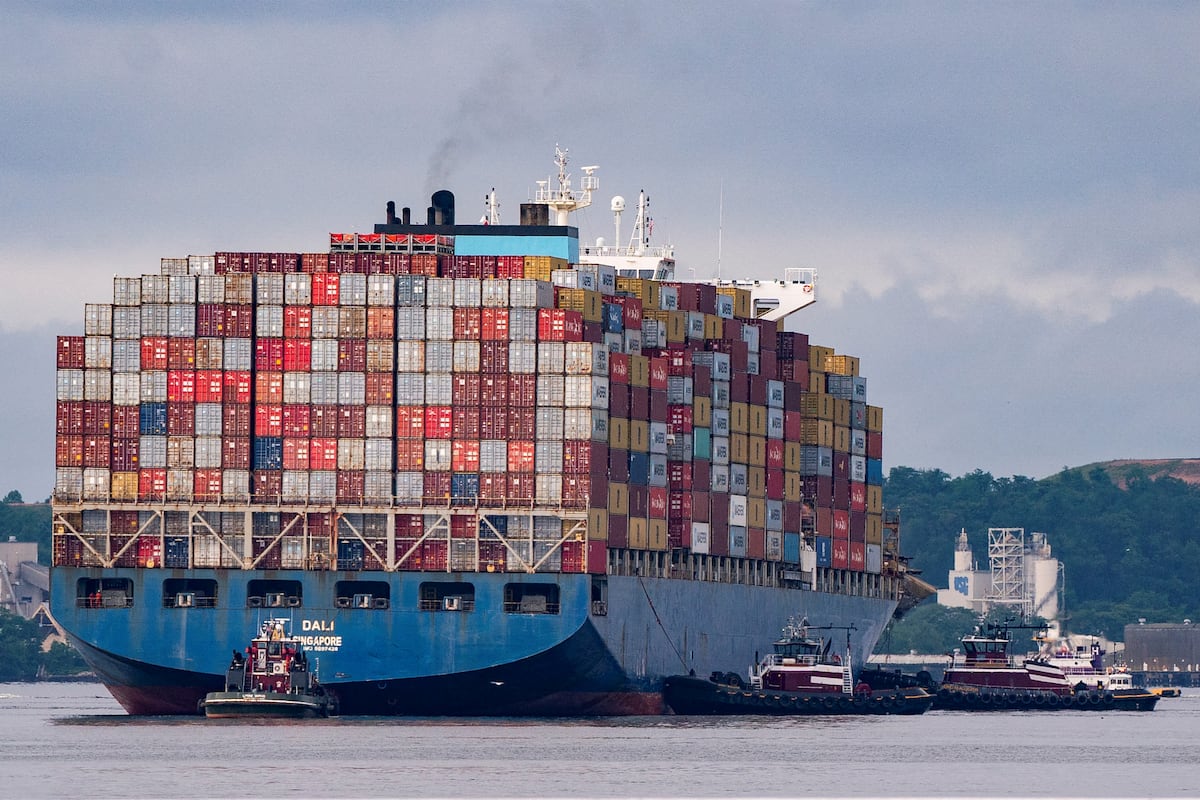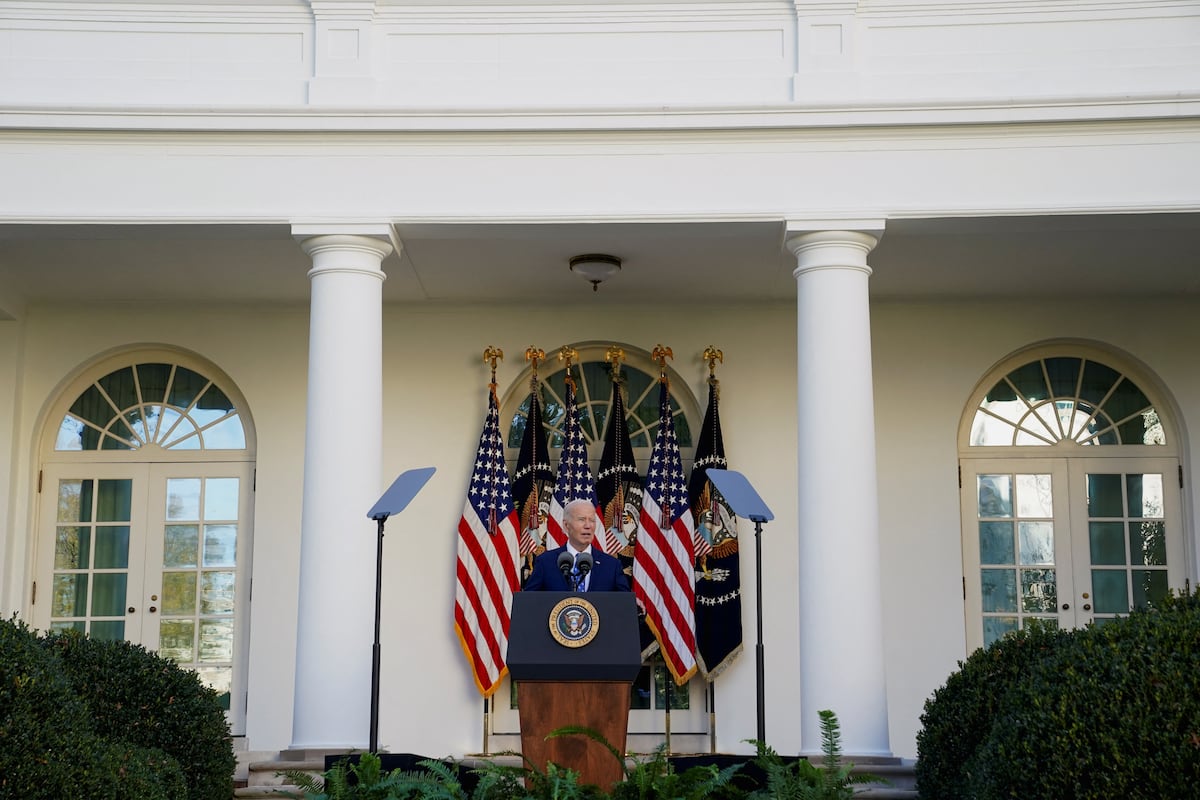Donald Trump can be criticized for many things, but there is no lack of clarity. “Tariff is the most beautiful word in the dictionary. “More beautiful than love, more beautiful than respect,” he said during the campaign, faithful to his usual grandiloquence. To propose, next, a tax of between 10% and 20% on a universal basis: on all products that arrive in the North American country from any corner of the world. Without distinctions. That is only the basis of the protectionist proposal of the already elected president of the United States: on top of it he wants to add additional taxes ad hoc by products or countries of origin, with China in the center of the target, but also with the EU, Canada and Mexico in the spotlight – this Monday it announced that it will tax its North American partners with 25% and an additional 10% to the Asian giant. Plans that, if they end up becoming a reality – something that remains to be seen – would place tariffs at levels not seen since the 1930s, the years of the Great Depression. Thus, the last embers of free trade would be extinguished.
There is no precedent for a universal surcharge. Even less so, in a country the size of the United States. The leading world power, undisputed champion of free trade for much of the last century, would become, in short, a gigantic laboratory of economic policy in real time. It would, in a way, rain in the wet, after Trump’s first term of unmistakable protectionist sign that his successor, Democrat Joe Biden, has by no means reversed. And at a time in which international trade is not going through, by any means, its most buoyant moment, with tariff barriers once again taking over the headlines of the economic and general media, the EU and Mercosur are at each other’s throats again and the organ of appeal from the World Trade Organization (WTO, one of Trump’s favorite objectives in his first stage) immersed in an endless crisis that has lasted more than five years. It started, of course, with the Republican in the White House.
The precedents are clear. Trump inaugurated his first term with a total amendment to multilateralism: withdrawing his country from the trade agreement with the Pacific countries (the TPP) and beginning, urgently, the renegotiation of NAFTA, the agreement that united the United States with the United States since the 1990s. Mexico and Canada, and which he himself turned into one of the axes of his speech. Didn’t stop until I got an update, a prioribeneficial to Americans. That would be the first of many mercantilist nods: shortly after, tariffs on steel and aluminum would arrive, two products with obvious historical reminiscences and of vital importance in the so-called Rust Belt. One of the regions on which, in the end, the Republican has cemented his second electoral victory.
hands free
Unlike Trump’s first term, Republicans will now have a comfortable majority in the Senate and the House of Representatives, who must ultimately approve any major change in US trade policy. Free hands, therefore, for a president who returns with renewed strength and with a clear mandate from the polls. And, unless there is a last-minute change, it will once again place Robert Lighthizer, hawk among hawks, as the highest American authority on trade matters. A position that he already held between 2017 and 2021.
As then, the New York tycoon’s plans arouse significant suspicions among those who follow the day-to-day life of international trade. There are reasons: if eight years ago his invectives had a clear, almost unique recipient (Mexico), today they are indiscriminate. “The magnitude of the proposed tariffs goes beyond what most economists consider a prudent trade policy,” emphasizes Aurélien Saussay, from the London School of Economics (LSE), in a recent monograph on the subject. This Monday, Trump gave another example of his intentions, by announcing a 25% tariff on Mexico and Canada from day one of his Administration. A threat with an unequivocal intention: to force them to negotiate, like eight years ago.
“Unilateral solutions can generate quick solutions for a country, but also important disruptions in the long term,” warns the head of the United Nations arm for trade and development (Unctad), Rebeca Grynspan. “The new Administration in the United States could generate significant changes in international trade policy and in the multilateral trade regime. Surplus economies, which have historically depended on the US market to absorb their exports, would face much more complex adjustment challenges.” World trade, says Leopoldo Torralba, deputy chief economist at Arcano Research, “would deteriorate significantly and there would be a redirection of flows.”
The alerts also come from the main bodies of economic power on the planet. On November 6, a few hours after Trump’s return to the White House was confirmed, the European Central Bank (ECB) was already warning of the “enormous” impact of its tariff promises, beyond the universal rate. “I can assure you that the direct and indirect effects and trade deviations will be enormous,” said the vice president of the issuing institute, Luis de Guindos, who expressed a sentiment shared in the capitals of the Old Continent.
A few days before the elections, it was the International Monetary Fund (IMF) that warned of the consequences that a new decline in international trade would have. Aware, perhaps, of this scenario, the future Secretary of the Treasury, Scott Bessent – the most moderate voice of the next US Administration – has already dropped that the implementation of the tariffs must be “gradual” if they are to be avoided. shocks in the market.
This new acceleration of protectionism and mercantilism in the United States arrives, paradoxically, on the 30th anniversary of the General Agreement on Tariffs and Trade (GATT), which definitively established free trade as a great global economic paradigm. A lot, a lot, things have changed since then: the failure to fulfill the promise that trade without barriers brought with it – it generated prosperity, and not a little, but it was distributed little and badly – has been the perfect breeding ground for the triumph of those They defend the barriers between countries.
“Things may be different if the tariffs are universal and at levels never seen before, but the recent history of the tariffs of 2018 and 2019 — which marked the most important return to protectionism in the United States since the 1930s — are the most important reference. nearby,” outlines Pablo Fajgelbaum, professor of Economics at the University of California in Los Angeles (UCLA) specialized in international trade. That is, he says, the best touchstone of what may be to come. “There were strong responses from its main trading partners: China, the European Union, Canada or Mexico. And, although trade in the US and China fell sharply in goods subject to tariffs, it increased in others,” he counters by email. Result: “Overall, it holds firm.”
internal key
A universal tariff of 20% would have an 8% impact on the final price Americans pay for imported products, according to calculations by the chief economist of the Swiss investment bank UBS, Paul Donovan. “Part of the impact will be absorbed by supply chains, with reduced profits [empresariales]. They will increase inflation, but not so much the political perception of it,” he clarified in a recent email to clients. There, Trump has won a good part of the story’s battle: in the collective imagination, the inflationary crisis will be unequivocally linked to the It was Biden..
Aside from tariffs, the potential inflationary cocktail has several more ingredients that could increase its flammability. The largest of all is immigration, one of the thematic blocks that have made Trump’s return to the White House possible and where the Republican maintains a tough position with arrivals. If its program is strictly applied, the decline in migrant arrivals would substantially reduce available human capital, raising wages and fueling what economists call “second-round” forces.
Trade protectionism will also have an impact on growth. A recent study by the Tax Foundation estimates that, even if it remains at 10%, the universal tariff would reduce the growth of the US economy by 0.75% in the long term. With an impact on the labor market equivalent to 600,000 full-time jobs. That, without taking into account the more than likely retaliation from its trading partners: history says that no one stands idly by when they see exports taxed. This time will be no exception.







